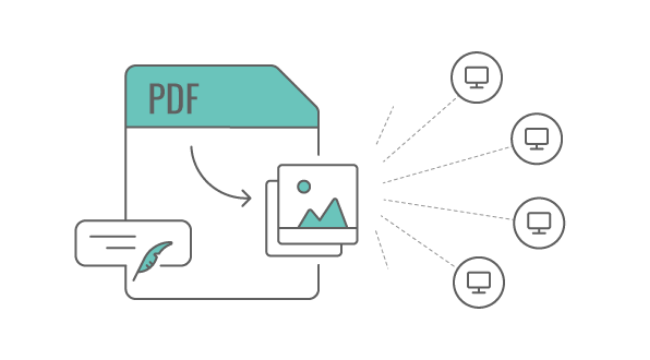Convert PDFs to Images, Add Annotations, Save as PDF, and More
Easy PDF Viewing, Sharing and Annotation
Using just a couple of lines of code in C# or VB.NET, the Dynamsoft PDF library allows you to convert vector PDF documents to raster images (JPEG, PNG, TIFF, PDF) for easier viewing or sharing. Furthermore, the PDF library enables you to add PDF annotation functionality to your WinForms applications with C# or VB.NET. This allows for markup and objects to be superimposed directly onto a PDF document, without changing the underlying master PDF.
PDF Creation
Dynamsoft PDF library provides a set of comprehensive APIs to allow saving images as multi-page PDF files while also configuring various metadata properties for the file.
PDF Rasterizer
Dynamsoft PDF library allows converting PDF documents into images quickly and conveniently by supporting multiple popular image formats and font types.
PDF Annotation
Dynamsoft PDF library is also capable of adding annotation to your PDF documents. There are many powerful features to provide a friendly user experience.
Features
PDF Creation
- Saves all images in the buffer as a multi-page PDF file
- Saves all images in the buffer as a multi-page PDF byte array
- Uploads images in the buffer as a multi-page PDF file via FTP and HTTP
- Sets various properties and metadata on PDF creation, including author, creator, producer, creation date, modified date, margin, page size, keywords, subject, title, compression type, and version
PDF Rasterizer
- High-speed viewing of PDF documents in your WinForms or WPF applications
- Customize the resolution when rasterizing PDF documents
- Convert PDF documents into popular image formats, including JPEG, TIFF, PDF files, PNG, and BMP. Multi-page TIFF and PDF are also supported
- Supports CCITT G3/G4, JPEG, Flate, LZW, RLE and ZIP embedded images
- Supports reading PDF/A images
- Supports all font types: Type0, Type1, Type1C, Type3 and TrueType
- Supports all three text rendering modes (full, stroke, clipping)
- Supports all color spaces: RGB, Gray, CMYK, ICCBased, Lab, Indexed, Separation, DeviceN, and Pattern
PDF Annotation (WinForms applications)
- Set the order of annotations by using 'pull to front' and 'push to back'
- Allow any object to be rendered at transparency levels from 0 - 100%
- Add any number of annotation objects to an image. These objects can be independently moved and resized.
- Multiple annotations can be selected as a group so that they are moved as one object.
- Annotations can be printed with the base image
- Text annotations can be rotated with the image in 90-degree increments
- A smooth dynamic display. Objects are shown with an outline when resizing, so the resulting size is clear.
- Responds to numerous mouse clicks events, allowing custom scripts or automation to be implemented
- Annotations can use custom controls by making use of the Annotation Data class
- All icons for all annotation types are fully customizable at any size
Built-In Annotation Objects and Basic Features
| Text | Rectangle | Line | Ellipse | |
| 0 - 100% Transparency | ||||
| Customizable fill color | ||||
| Customizable line color | ||||
| Customizable font | ||||
| Change layer | ||||
| Move | ||||
| Rotate 90 degrees | ||||
| Resize | ||||
| Flip |
Royalty-free Desktop Distribution
You only need a developer license for development purposes to use the add-on. There is no runtime fee for desktop distribution.



